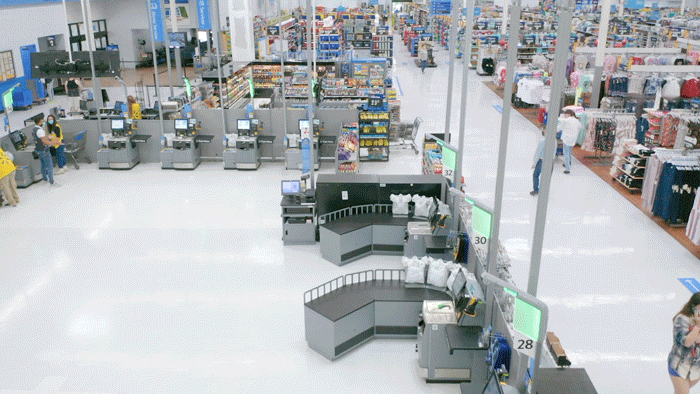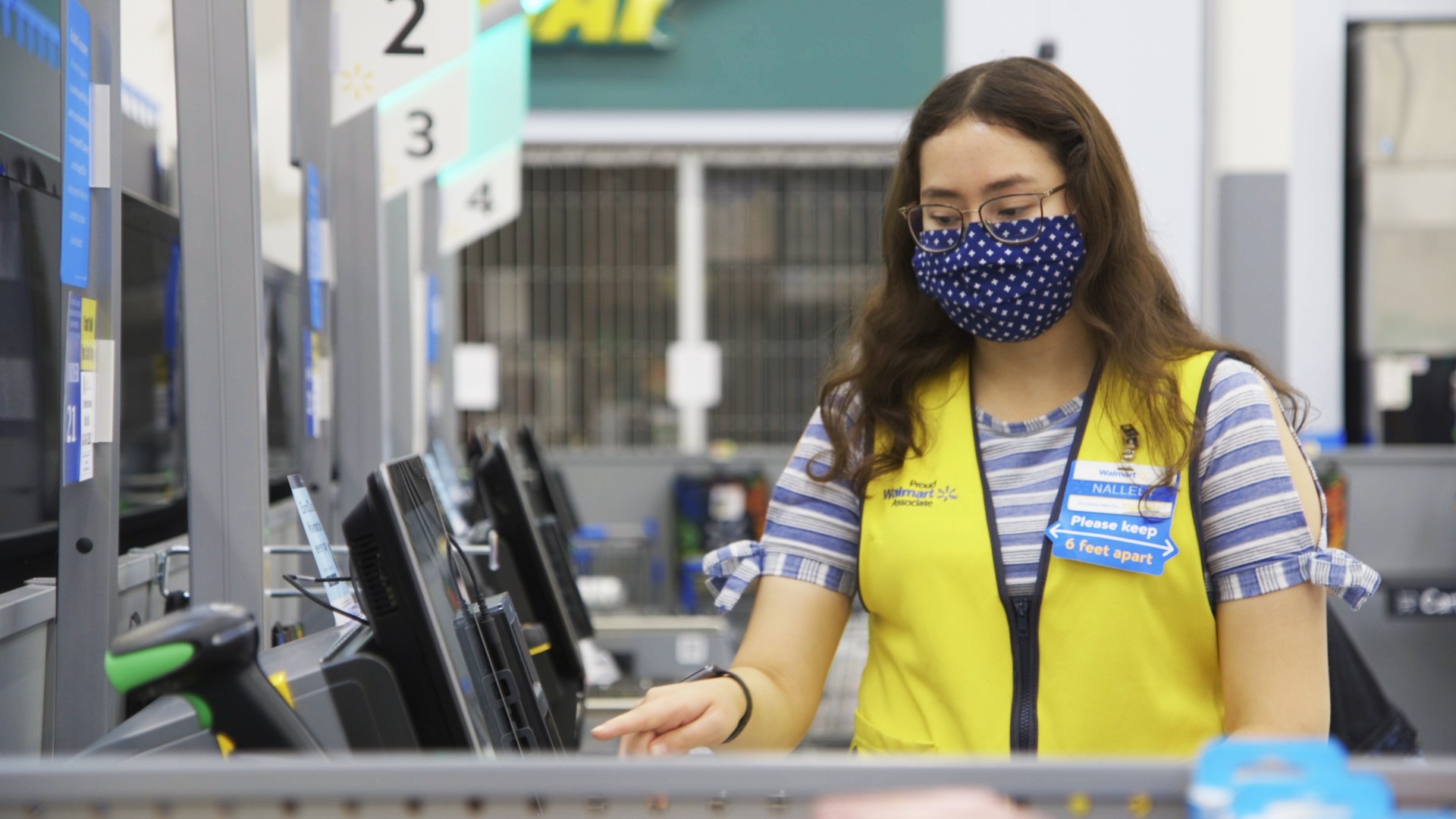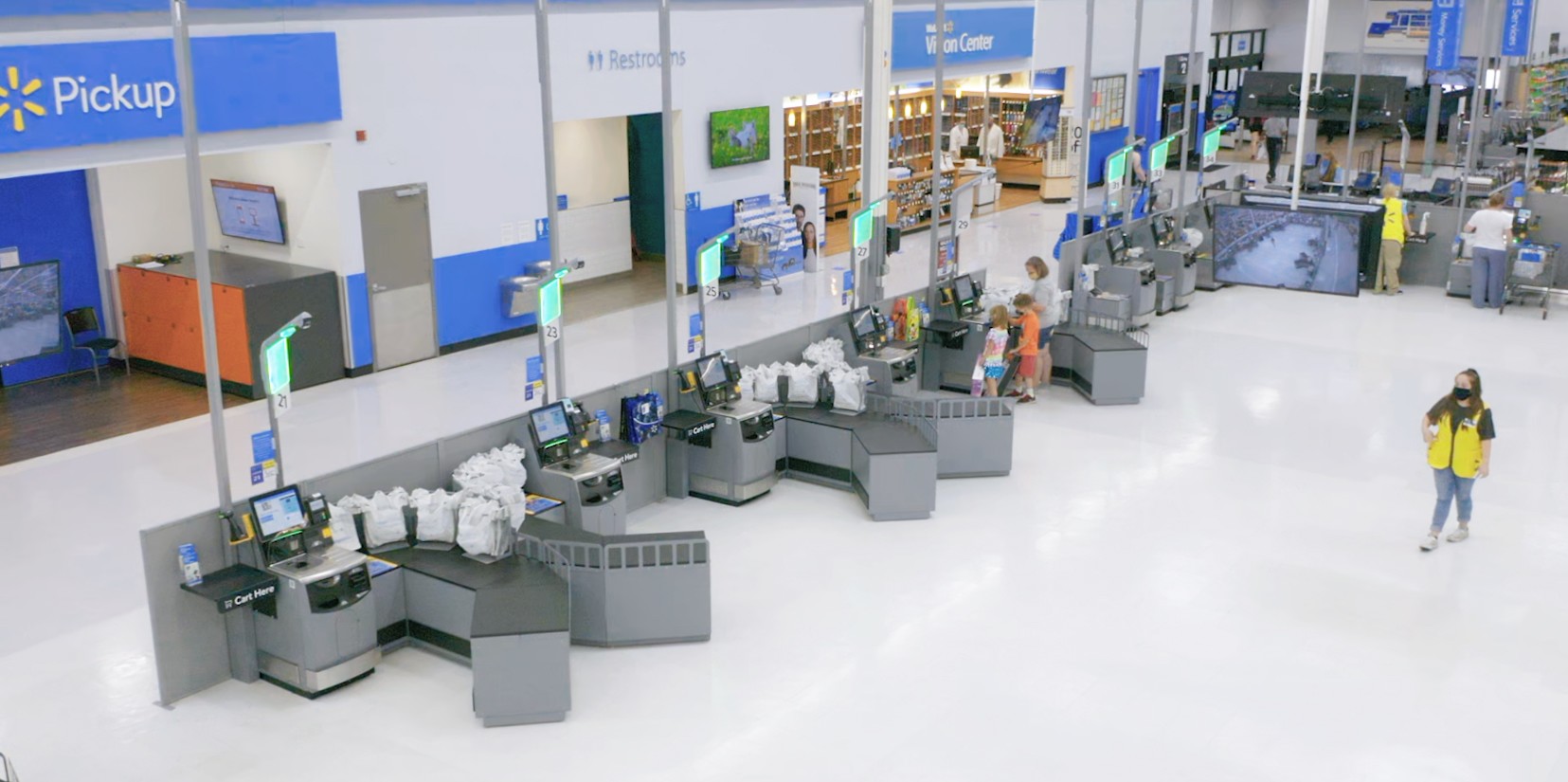From Walmart June 2020 but being recirculated.
June 30, 2020
By Matt Smith, Walmart Corporate Affairs
Retail checkouts have been evolving for years. Inside its stores, Walmart has introduced convenient check out options, including self-checkouts, pickup and delivery, giving customers more choice and changing the way they shop.
But there’s one checkout area that hasn’t changed in a long time. Cashiers stationed at conveyor-belted lanes have been a retail staple for decades. An experimental checkout experience at a Supercenter in Fayetteville, Arkansas, seeks to challenge the assumption that old ways are better.
The Layout
The design is pretty simple. All the lanes are gone.
There are 34 registers lining the edges of a wide-open area. Each register is equipped with a green light alerting associates and customers to available checkout bays. But, aside from the open layout, the most immediately noticeable detail is all the registers are open.

At first glance, the new area may look like it’s just a bunch of self-checkout registers. But ask any associate, and they’ll tell you it’s a full-service checkout experience.
“In this new layout, you get greeted from the entranceway and helped all the way through the whole process,” Store Manager Carl Morris said.
A Human Touch
When you walk into this new frontend layout, it feels like a different experience but in a very good way. Instead of looking for an open lane, customers walk into the register area, and an associate is right there behind a clear barrier to greet them.

All the cashiers in the store transitioned to a new type of job called ‘Host.’ It’s the Host’s job to make sure the checkout experiences are exactly what customers want them to be. If a customer wants to check themselves out, a host is there to show them to an open register. If a customer wants to be checked out by an associate, a host rings them up and bags all of their items just like they would have in the old lane-driven layout.
This kind of interaction is what Senior Vice President of Walmart U.S. Innovations Development John Crecelius has been excited to see come to life while designing this new layout.
By nature, individual lanes make the checkout experience transactional, but being face-to-face, the interaction becomes a relationship. We want to make it a personal experience.
Morris explains that getting the Hosts out from behind the register has changed the whole mindset of his frontend associates. Now, instead of focusing on the speed of each transaction, Hosts are focusing on the individual needs of each customer.
“We will go to any register, and we will help you in any fashion you want, whether it’s checking out one item or all the items. Any questions you have, we’re right there for you,” Morris said.
Faster Checkout
One of the most common complaints with the traditional checkout experience is that there aren’t enough lanes open. There are a couple of reasons for this. The first is visibility.

It’s hard to see which lanes are open, because of the physical walls between them. To save time, many customers search for the shortest line or the line that seems to be moving the fastest. This creates a never-ending grass-is-always-greener scenario where the customer spends time calculating which line will take the least amount of time.
When we had the old register layout, you have the sense that there is only a limited amount of space to checkout at. Now when they walk in, it is wide open. Any choice they want and any amount of help they need, we can offer them.
Lanes are also slow to adapt to sudden changes in customer flow. If the store suddenly gets busier, getting another cashier isn’t always easy.
“If we didn’t have someone staffed for those lanes, then we couldn’t get someone checked out, so lines were building up a lot,” Frontend Team Lead Matt Downing said.
In the new layout, all 34 registers are always open. There is no such thing as opening or closing a lane, so adapting to changing traffic patterns is much easier. It’s also easy to maintain a safe social distance within the open area, because there’s plenty of room to maneuver.

Running a register in the lane-driven layout is a fairly complicated job. On average, it takes 40 hours of cashier training to operate a register. With the new layout, the training takes less than a day, so Hosts can start helping customers much faster.
“It’s not just a self-checkout experience. It’s a manned checkout experience if you want. We’re able to move customers through a lot faster,” Downing continued.
A Better Place to Work
These personal interactions are changing the whole experience for associates as well.
“Getting that personal face-to-face conversation, it’s really nice,” Downing said. “I’ve noticed in just two weeks that it’s helped me be more positive and more outgoing to new people.”
As a Frontend Team Lead, Matt Downing is responsible for running the frontend and developing his team of Hosts. Downing has noticed that his team has been feeling more empowered and connected with the rest of the store now that they’re not required to stand at a register.

“Now they get to run returns out to the store. They get to go to produce and bring someone a fresh apple that’s not bruised,” Downing said. “They feel like they are a part of the store now.”
And associates seem to be interacting with each other more as well. Before the change, Downing reported that most of his interactions with cashiers were about business, because it was hard to get around to see everyone and help customers at the same time.
Morris said he’s noticed associates feel more empowered to help each other out too. “There’s no barriers of conversation on the frontend. It creates a whole lot better atmosphere coming to work,” Morris said.
It’s still early to tell if this new register layout will work out long-term, but Morris is optimistic, “There’s no doubt in my mind we will win the customer over as long as they give us a chance.”
